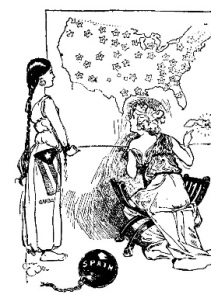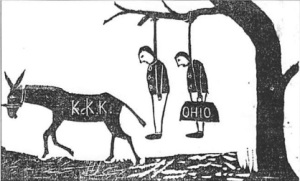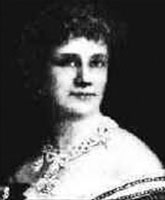The purpose of this update is to expand upon and clarify the points made within the enduring understandings section of the first post, to make some additions and edits to the list of key terms, and to provide a realistic idea as to what the life of someone at the bottom of the totem pole would be like amidst American Imperialism of the late 19th century into the early 20th century. An additional enduring understanding is needed in order to get a clearer picture of how American Imperialism fits into the theme of people, places and power. I felt that the list of key terms in the original post was a bit too short, and so have decided to add a few more.
New Key Terms
Yellow Journalism : when newspapers and other media outlets exaggerate the news, make sensationalist headlines that are sometimes completely untrue, and stir up senses of national pride in order to increase circulation
Jingoism : a burst of national pride and desire for an aggressive foreign policy
William Randolph Hearst : owner of the New York Journal
Joseph Pulitzer : owner of the New York World
Rough Riders : led by Theodore Roosevelt and formally known as the first volunteer calvary, a group of volunteers including cowboys, miners, policemen and college athletes that fought for the US during the Spanish American War
Original List of Key Terms
Imperialism – when stronger nations attempt to create empires or simply gain more territory by taking over weaker nations – economically, politically, culturally, or militarily.
Nationalism – devotion to one’s nation; the belief that the country one lives in has superior ideals and goals to other nations.
Manifest Destiny – the 19th century idea that the expansion of the US throughout the American continents was both justified and inevitable.
Monroe Doctrine – foreign policy document written by then-president James Monroe – the doctrine noted that the US would neither interfere with existing European colonies nor meddle in the internal concerns of European countries.
Midway Islands – unincorporated territory of the United states (since 1903 when Theodore Roosevelt placed them under the control of the Navy) in the central Pacific Ocean, 1,300 miles northwest of Honolulu
Naval Act of 1890 – an act by Congress giving more power to the Navy by calling for the construction of more battleships, gunboats, torpedo boats, and cruisers.
Social Darwinism – the idea that powerful should increase their power and wealth, meaning, as a result, that the not powerful would have their power and wealth decrease. Social darwinists thought that expanding the US territory was beneficial because it introduced Christianity and modern civilization
Theodore Roosevelt – 26th president of the United States, foreign policy was “speak softly and carry a big stick”, thought that civilized nations have a duty to develop uncivilized ones.
William McKinley – 25th president of the United States, led America to victory in Spanish American war, established open door policy with China, thus starting the age of American Imperialism.
Standard Oil Company – oil company owned by the Rockefeller family, made up 90% of exports of kerosene and 70% of the world market in the 1890s
Enduring Understandings
People with economic power tend to use their influence on people with political power in order to get what they want. “American labor unions had sympathy for the Cuban rebels as soon as the insurrection against Spain began in 1895. But they opposed American expansionalism. Both the Knights of Labor and the American Federation of Labor spoke against the idea of annexing Hawaii, which McKinley proposed in 1897″ (The Empire and The People, 306). Labor unions can have a potentially strong grip on the economy, because, depending on the size of the Union, they can posses control of entire industries. If the government goes against the unions, they could possibly have collapsing industries. From McKinley’s State of the Union Address, “Third, the right to intervene may be justified by the very serious injury to the commerce, trade, and business of our people, and by the wanton destruction of property and devastation of the island.”(Excerpt from President William McKinley’s War Message to Congress, April 11, 1898.) People in positions of economic power would not at all be pleased if their businesses were in jeoprady and so people with political power do what they can do preserve it, in this case going to war. Another enduring understanding is that the goal of war is often times not to end the conflict but to establish control of strategic locations and to gain economic and political power. “Americans began taking over railroad, mine, and sugar properties when the war ended. In a few years, $30 million of American capital was invested. United Fruit moved into the Cuban sugar industry…. By the end of the occupation, in 1901, Foner estimates that at least 80 percent of the export of Cuba’s minerals were in American hands, mostly Bethlehem Steel” (The Empire and The People, 310). Obtaining resources for a nation is something all civilizations have done. War, demonstrated here, can often be an effective, albeit destructive way to get these resources. The image to the right shows how the US invaded Cuba not just to end the conflict with Spain, but to gain a strategic territory for themselves. It has Cuba in a ball and chain, with Miss Columbia pointing to cuba on a map with the then 45 states juxstaposed next to it. (Chicago Record-Herald, 1901. Chicago, Illinois.) The media can play a crucial role in garnering public support for wars and international conflicts. In 1895, after the explosion of the USS Maine, the New York Journal ran an article with the headline “NAVAL OFFICERS THINK THE MAINE WAS DESTROYED BY A SPANISH MINE” despite the fact that no evidence to point to this was present. The closest the article comes to providing evidence is a description of how a mine works: “The Spaniards, it is believed, arranged to have the Maine anchored over one of the harbor mines. Wires connected the mines with a… magazine, and it is thought the explosion was caused by sending an electric current through the wire.” (New York Journal and Advertiser, February 17, 1898) However, due in part to the sensationalist headlines of this and other newspapers and articles, using to their advantage the fact that over 250 people were killed as a result of the explosion, the US invaded Cuba just a couple short months later.
the right shows how the US invaded Cuba not just to end the conflict with Spain, but to gain a strategic territory for themselves. It has Cuba in a ball and chain, with Miss Columbia pointing to cuba on a map with the then 45 states juxstaposed next to it. (Chicago Record-Herald, 1901. Chicago, Illinois.) The media can play a crucial role in garnering public support for wars and international conflicts. In 1895, after the explosion of the USS Maine, the New York Journal ran an article with the headline “NAVAL OFFICERS THINK THE MAINE WAS DESTROYED BY A SPANISH MINE” despite the fact that no evidence to point to this was present. The closest the article comes to providing evidence is a description of how a mine works: “The Spaniards, it is believed, arranged to have the Maine anchored over one of the harbor mines. Wires connected the mines with a… magazine, and it is thought the explosion was caused by sending an electric current through the wire.” (New York Journal and Advertiser, February 17, 1898) However, due in part to the sensationalist headlines of this and other newspapers and articles, using to their advantage the fact that over 250 people were killed as a result of the explosion, the US invaded Cuba just a couple short months later.
Cuban rebels would be generally supportive of US intervention in the (then) colony. They would have been fighting the Spanish in skirmishes and could use some help from outside the area. However, after the conflict ended, the Cuban rebel would be irritated that the US is debating what to do with Cuba rather than just let them have their complete independence. As a new nation coming out of a war that they won because of the United States, though, it would not be within their power to try and change anything. As much as they would want to see complete independence, they would have to just wait and see what happens, trying to just be glad that the United States helped them fend off the Spanish.



 They had done hangings before and this cartoon serves as a warning to whites who do not share the same viewpoint as the KKK. The whipping of the former slave sets an example for any blacks who thought it would be a good idea to try to voice their opinions and side openly with the Republicans. Colby, the former slave, noted in his testimony to the House and Senate in 1872, noted, “No man can make a free speech in my county. I do not believe it can be done anywhere in Georgia.” (B). The Ku Klux Klan, by making an example out of Colby, effectively suppressed the state of Georgia – nobody wanted to speak out in fear that their fate may end up being similar to his. Further adding to this intimidation factor is the cartoon from Harper’s Weekly depicting the incident – it shows two men each holding a gun to either side of Colby’s head, with a crowd in the background simply watching, demonstrating the power the Klansmen had over the general public (B2).
They had done hangings before and this cartoon serves as a warning to whites who do not share the same viewpoint as the KKK. The whipping of the former slave sets an example for any blacks who thought it would be a good idea to try to voice their opinions and side openly with the Republicans. Colby, the former slave, noted in his testimony to the House and Senate in 1872, noted, “No man can make a free speech in my county. I do not believe it can be done anywhere in Georgia.” (B). The Ku Klux Klan, by making an example out of Colby, effectively suppressed the state of Georgia – nobody wanted to speak out in fear that their fate may end up being similar to his. Further adding to this intimidation factor is the cartoon from Harper’s Weekly depicting the incident – it shows two men each holding a gun to either side of Colby’s head, with a crowd in the background simply watching, demonstrating the power the Klansmen had over the general public (B2).




